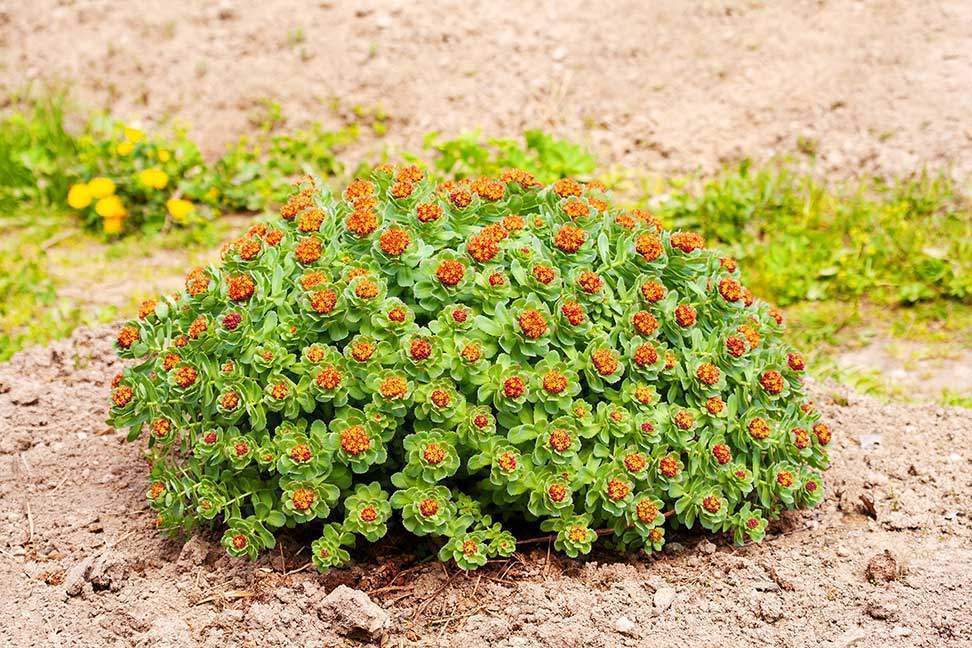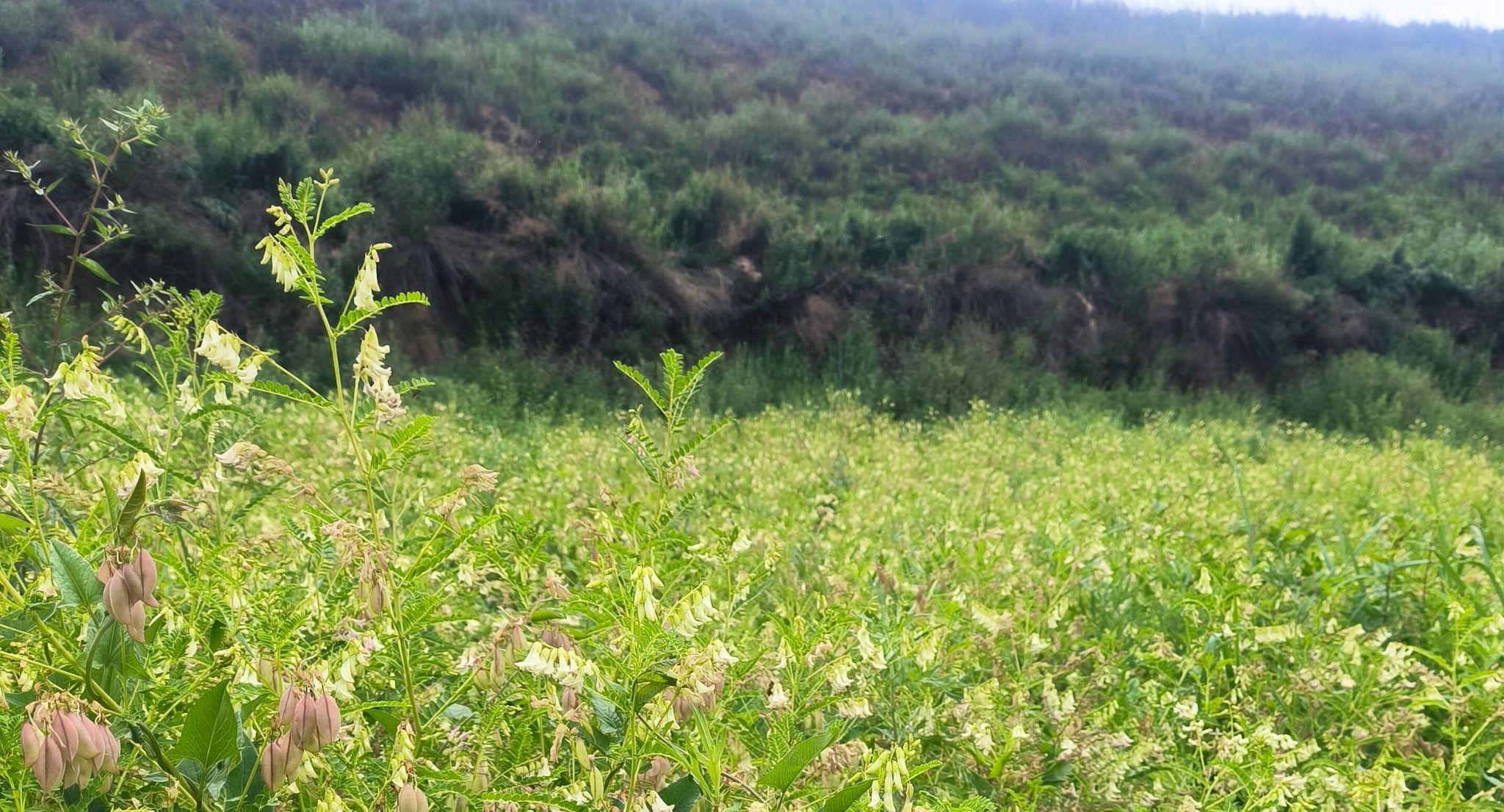Rhodiola: The Golden Root
When plants grow in tough conditions, such as in areas of high altitude or rocky cliff sides, they must adapt in order to survive. One such plant from the cold Northern Hemisphere evolved to be so full of chemical compounds beneficial for human health, that it survived for thousands of years and spread across the world.
Known as “the golden root,” the plant is hardy and is native to the northern parts of the globe. Even when growing in the farthest northern reaches, Rhodiola has small yellow blooms and radiant green succulent-like leaves.
Rhodiola has many subspecies and it’s known by many names throughout the world. Some of the names include arctic root, golden root, Rosen root, and king’s crown. It has been used for centuries for energy support, stress reduction, mental health, physical endurance and more.
Rhodiola in Asia
Tibetan Medicine
All across Asia, you can find examples of how important Rhodiola root was throughout the centuries.
The indigenous people of the Tibetan region had their own health practices, long before outside influences were able to find them. Later, aspects of traditional Chinese herbalism and Ayurvedic medicine, the traditional health system of India, also made their way into Tibet’s herbal practices. The practice of Sowa Rigpa, which is the Tibetan word for its system of medicine, goes back over 2,500 years.
Rhodiola’s Influence in the Himalayan Region
Rhodiola was one of the region’s native herbs. The same chemical compounds that helped the plant thrive in the harsh environment of the so called “roof of the world” were also beneficial to people inhabiting the area.
The earliest documented uses of rhodiola known in the world come from Sowa Rigpa medical texts in Tibet. There are several pharmacopeias including the Jing Zhu Materia Medica, Yue Wang’s Classical Medicinal, and The Four Medical Tantras, which all mention Rhodiola.
Hong Jing Tian 红景天
In Traditional Chinese Medicine, rhodiola is known as Hong Jing Tian (红景天). According to TCM, temperature plays an important role in the balance of our bodies. The balance of Qi, or life force of the body, is dependent on many factors and temperature is one of them. Rhodiola has cooling properties which can be helpful for those with too much heat (considered Yang Excess) in the body.
It’s considered a sweet herb in TCM, meaning that it has soothing and detoxification properties. It has “tonic” properties, meaning that it invigorates and restores. The organ that it’s most associated with is the Liver. The liver plays an important role in TCM, because it’s the main organ that regulates the flow of Qi in the body.
Russian Herbal Traditions
Like Tibet, Russia also has an interesting mix of influences when it comes to its traditional health practices. Being the bridge between Europe and Asia meant that the medical traditions of Russia have both Western and Eastern qualities.
Long before copies of Greek Herbal Medicine books made their way into Russia during the 10th century, Russia had its own form of traditional herbalism based on the herbs native to the region. In the 13th century, region was occupied by Mongolians and Tartars who also left their mark on its herbal traditions. Western European and Arabic traditions were even incorporated by the 16th century as Russia expanded.
Rhodiola, Russia’s Secret Weapon
With different species of Rhodiola native to Asia, it’s no surprise that this herb was one of the most cherished in the history of Russian medicine.
In the 1970’s, Russia conducted extensive experiments testing the energy boosting properties of Rhodiola and other adaptogenic plants. The goal was to find the best performance enhancing herbs specifically for their astronauts and Olympic athletes. The research was directed by the Russian government and was top-secret, so much so that scientists were under a strict gag-order.
In Siberia, Rhodiola was given as a gift to newlyweds to encourage fertility. Rhodiola tea is a staple of Siberia, thought to give those who consume it a long life.
Use of Rhodiola in Europe
Rhodiola started to appear in the medical of Europe literature in the 1720s. By then, was a well-known medicine in Greece, Russia, France, and Sweden. The Vikings used it to enhance endurance, both physically and mentally so that they could have the energy for pillaging and raiding when needed.
Greek physician Dioscorides also discussed the uses of Rhodiola root in his De Materia Medica around the first century CE, and Lennaeus wrote about it in 1749 in his Materia Medica.
Chemical Compounds Found in Rhodiola Root
The root of rhodiola is prepared in a number of ways as a tea, tincture, or in pill form. There are more than 140 compounds that have been isolated from Rhodiola.
Along with salidroside, rosavin is the other top compound in rhodiola root. Most rhodiola supplements contain a 3:1 ratio of salidroside and rosavin. While it was previously thought that rosavin was the most active compound responsible for the bulk of the herb’s benefits, more recent studies have shown that salidroside does most of the heavy lifting when it comes to rhodiola root’s benefits.
Some of the other compounds include:
- Monoterpene alcohols
- Cyanogenic glycosides
- Phenylethanoids
- Phenylpropanoids
- Flavonoids
- Flavonolignans
- Proanthocyanins
- Gallic acid derivatives
Adaptogens and Antioxidants
Rhodiola is primarily comprised of antioxidants which combined with the plant’s rich vitamin and nutrient content give the herb an adaptogenic quality. Adaptogens counteract the effects of stress in the body and mind. This can work by balancing the body’s needs, in some cases boosting energy and in other applications, supplying a soothing affect. Other popular adaptogens include turmeric, ashwagandha, ginseng, holy basil, and maca.
Top Benefits of Rhodiola
Mood Support
Energy Support
Stress Soothing
Concentration
Tibetan and Chinese Research on Rhodiola
Many modern studies on rhodiola have come out of Lhasa and the Tibet Institute of High-Altitude Biology. One area of focus is the herb’s adaptogenic qualities, specifically related to how to use rhodiola for altitude sickness. The institute created a special supplement made from rhodiola and another high altitude native, sea buckthorn (hippophae rhamnoides) that is used as a treatment for mountain sickness.
A review from the West China University of Medical Sciences looked at 90 previous reports and studies related to the different species of rhodiola found in China.
The review looked at the different reports of the main chemical compounds found across the different species, along with the possible clinical uses and pharmacology. It showed that across China, different species are used in traditional herbal medicine practices.
One of the top compounds found in the many species is salidroside, which is thought to be the reason rhodiola has anti-anxiety and anti-depressive affects.
Mood Support Study
One study looked at the effects of three top mood boosting herbs- rhodiola, Chinese skullcap, and lion’s mane mushroom, to popular anti-depressant medications. The goal was to help scientists better understand why some herbs have similar outcomes as anti-depressants, despite the fact that they operate in different ways in the brain.
The study was not meant to see if the herbs were a replacement for anti-depressant drugs. Instead, it focused on the biochemical processes involved with the reported mood boosting benefits of the herbs.
Rhodiola and the other herbs affected the biochemical events that are involved in psychiatric disorders. The study found the herbs worked to fight oxidative stress, support healthy inflammation, and even improve neurotransmitter function.
The neuroprotective effects of the herbs were due to the antioxidant effects, anti-inflammatory benefits, and the way the herbs protected mitochondrial function.
Salidroside in Rhodiola
With its adaptogenic qualities, rhodiola is the perfect natural companion for balancing mood. Salidroside is thought to be the main compound that helps soothe stress and improve mood. One review looked a collection human and animal studies of Rhodiola and its effects on mood, specifically for depression. Salidroside was seen again and in the different studies reviewed. Overall, it seems that the likely methods that the compound affects mood is by its effects on neurotransmitters and neuroendocrine receptors.
Rhodiola Root Extract on Fatigue and Stress
Rhodiola is a well-known fatigue fighter which is likely due to its adaptogenic properties.
A study focusing on participants with chronic fatigue looked at the effects of rhodiola root extract over a two-month period. The response was overwhelmingly positive, with participants reporting improvements in energy, mood, and quality of life.
It found that the extract actually decreased the cortisol response to stress in the body in addition to increasing concentration.
Quality Issues of Rhodiola Root
Rhodiola is so popular around the world that herb adulteration is common. Adulteration occurs when an herb is either of poor quality, contaminated, or when a lookalike herb is passed off as a different species.
When purchasing a Rhodiola product, it’s important to confirm that the brand is transparent about its sourcing methods. Where the product comes from, where the company sources the herbs from, and what kind of certifications are all important, especially for herbs like Rhodiola which are not native to North America.
The National Institutes of Health recommends only purchasing products with a supplement facts label on the packaging. This will give you information on dosage, ingredients like flavorings, fillers, or preservatives.
Stop Here to Learn More About Herb Adulteration
References:
Amsterdam, J. D., & Panossian, A. G. (2016). Rhodiola rosea L. as a putative botanical antidepressant. Phytomedicine, 23(7), 770–783. https://doi.org/10.1016/j.phymed.2016.02.009
Ju, L., Wen, X., Wang, C., Wei, Y., Peng, Y., Ding, Y., Feng, L., & Shu, L. (2017). Salidroside, A Natural Antioxidant, Improves β-Cell Survival and Function via Activating AMPK Pathway. Frontiers in Pharmacology, 8. https://doi.org/10.3389/fphar.2017.00749
Limanaqi, F., Biagioni, F., Busceti, C. L., Polzella, M., Fabrizi, C., & Fornai, F. (2020). Potential Antidepressant Effects of Scutellaria baicalensis, Hericium erinaceus and Rhodiola rosea. Antioxidants, 9(3), 234. https://doi.org/10.3390/antiox9030234
Oliver, John Rathbone, (4 Jan. 1872–21 Jan. 1943), Associate in History of Medicine, Johns Hopkins University, since 1930; Professor of History of Medicine, Medical School, University of Maryland since 1928. (2007). Who Was Who. https://doi.org/10.1093/ww/9780199540884.013.u229973
Olsson, E., von Schéele, B., & Panossian, A. (2008). A Randomised, Double-Blind, Placebo-Controlled, Parallel-Group Study of the Standardised Extract SHR-5 of the Roots ofRhodiola roseain the Treatment of Subjects with Stress-Related Fatigue. Planta Medica, 75(02), 105–112. https://doi.org/10.1055/s-0028-1088346
Roberti di Sarsina, P., Ottaviani, L., & Mella, J. (2011). Tibetan medicine: a unique heritage of person-centered medicine. EPMA Journal, 2(4), 385–389. https://doi.org/10.1007/s13167-011-0130-x
Shevtsov, V. A., Zholus, B. I., Shervarly, V. I., Vol’skij, V. B., Korovin, Y. P., Khristich, M. P., Roslyakova, N. A., & Wikman, G. (2003). A randomized trial of two different doses of a SHR-5 Rhodiola rosea extract versus placebo and control of capacity for mental work. Phytomedicine, 10(2-3), 95–105. https://doi.org/10.1078/094471103321659780
Shikov, A. N., Pozharitskaya, O. N., Makarov, V. G., Wagner, H., Verpoorte, R., & Heinrich, M. (2014). Medicinal Plants of the Russian Pharmacopoeia; their history and applications. Journal of Ethnopharmacology, 154(3), 481–536. https://doi.org/10.1016/j.jep.2014.04.007








